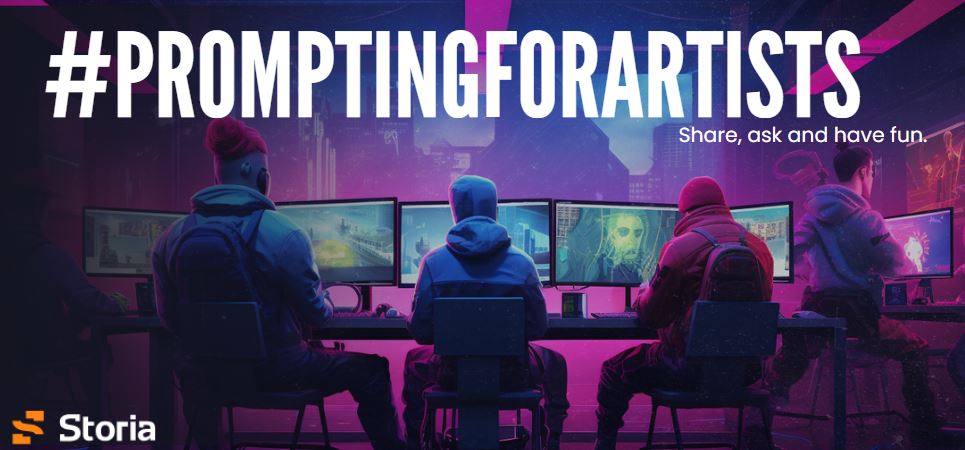Stylize (--s)
Overview
Versions 4, 5, 5.1, 5.2, and Niji 5 include the option to adjust the --s parameter. This parameter, the stylizer, allows us to fine-tune the fidelity of the image to the prompt. A lower value will result in an outcome more faithful to the prompt, while a higher value will produce a more artistic result.
The range of values for this parameter is from 0 to 1000. Additionally, it has a default value for all our prompts.
Adjusting Default Value
To adjust this default value, type /settings and you can choose among four values:
- Stylize low (50)
- Stylize Med (150)
- Stylize High (250)
- Stylize very high (750)
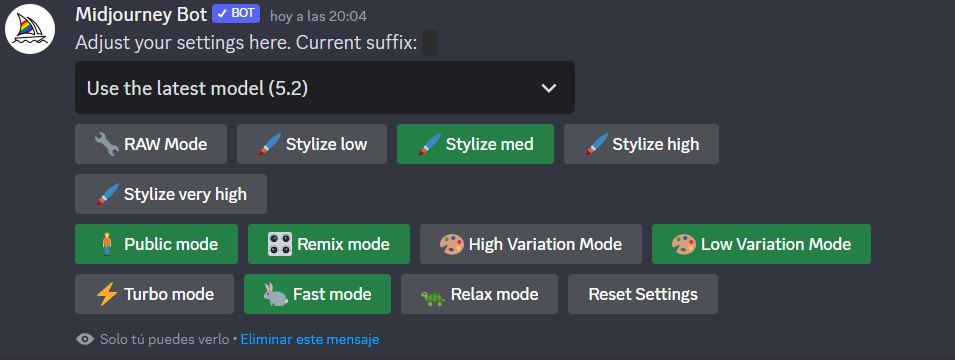
However, we can also specify it at the end of each prompt, adjusting it to the desired value.

Example
Let’s observe its influence with a simple but very visual prompt:
professional minimalistic logo | grumpy cat | flat illustration | green palette | white plain background
Additive prompting
This prompt has been generated using Additive Prompting. To do this, we have categorized the prompt in the following way:
professional minimalistic logo | [SUBJECT] | flat illustration | [COLOR] palette | white plain background --s 0
Additionally, we will not define the aspect ratio; instead, we will leave it by default, that is, 1:1. Check the Aspect Ratio section for more information.
We will vary the parameter from 1000 to 0, including 750, 500, 250, 150, 50, and 0. Let's begin with 1000:
professional minimalistic logo | grumpy cat | flat illustration | green palette | white plain background --s 1000
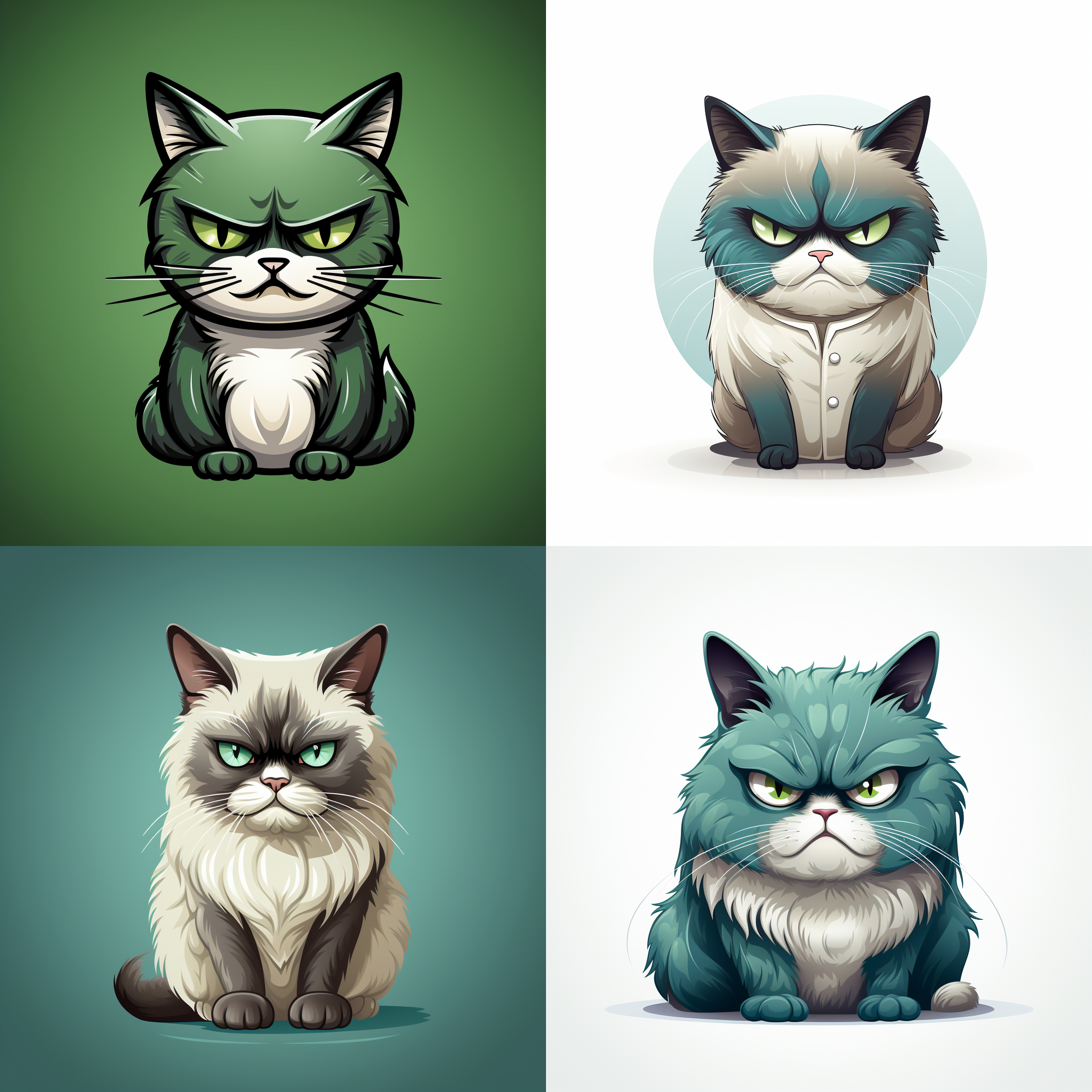
The images adhere quite well to what we have requested, but perhaps they are too detailed, don't you think? Let's lower the parameter a bit, down to 750:
professional minimalistic logo | grumpy cat | flat illustration | green palette | white plain background --s 750
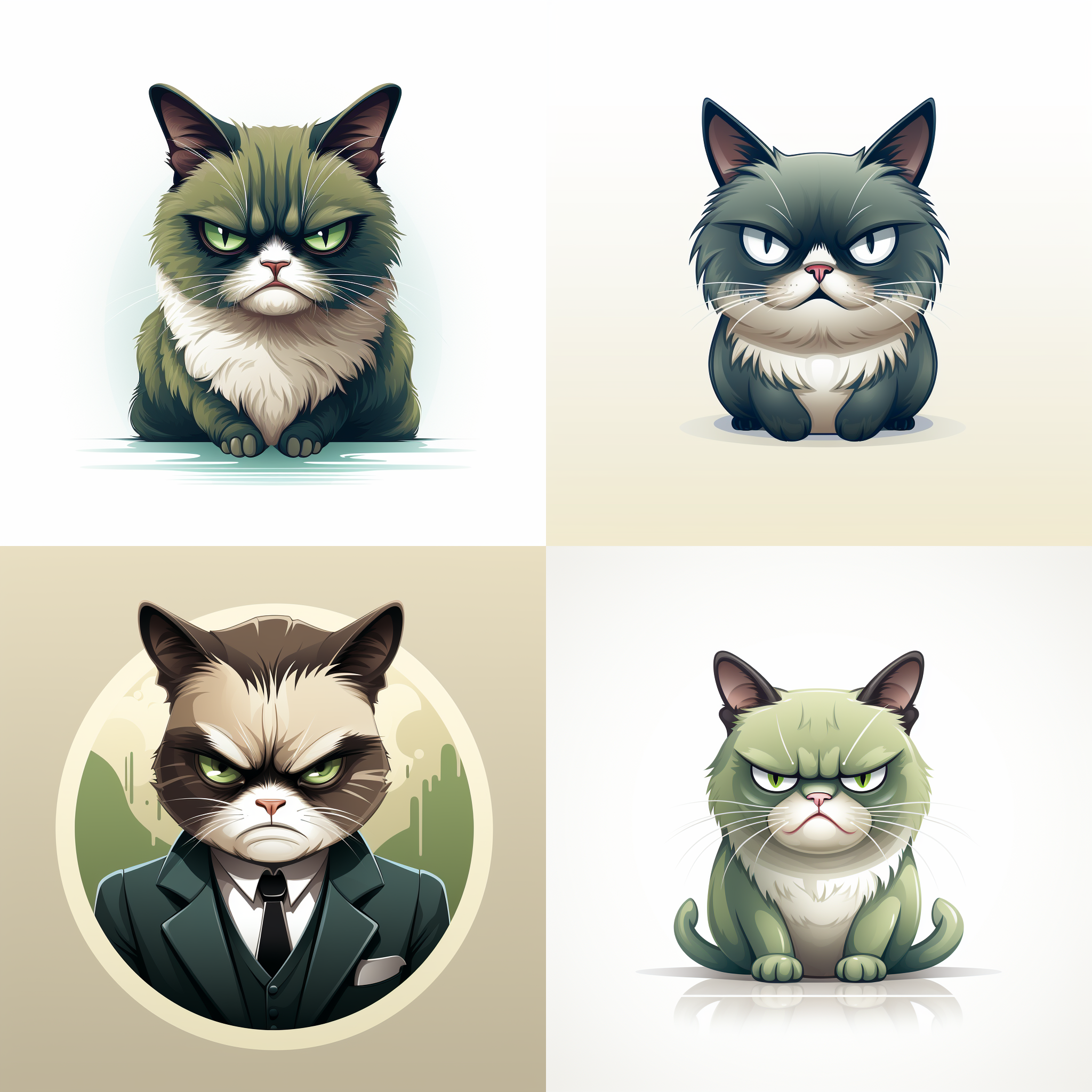
The results are similar; the difference is not very noticeable, so let's go down to 500:
professional minimalistic logo | grumpy cat | flat illustration | green palette | white plain background --s 500
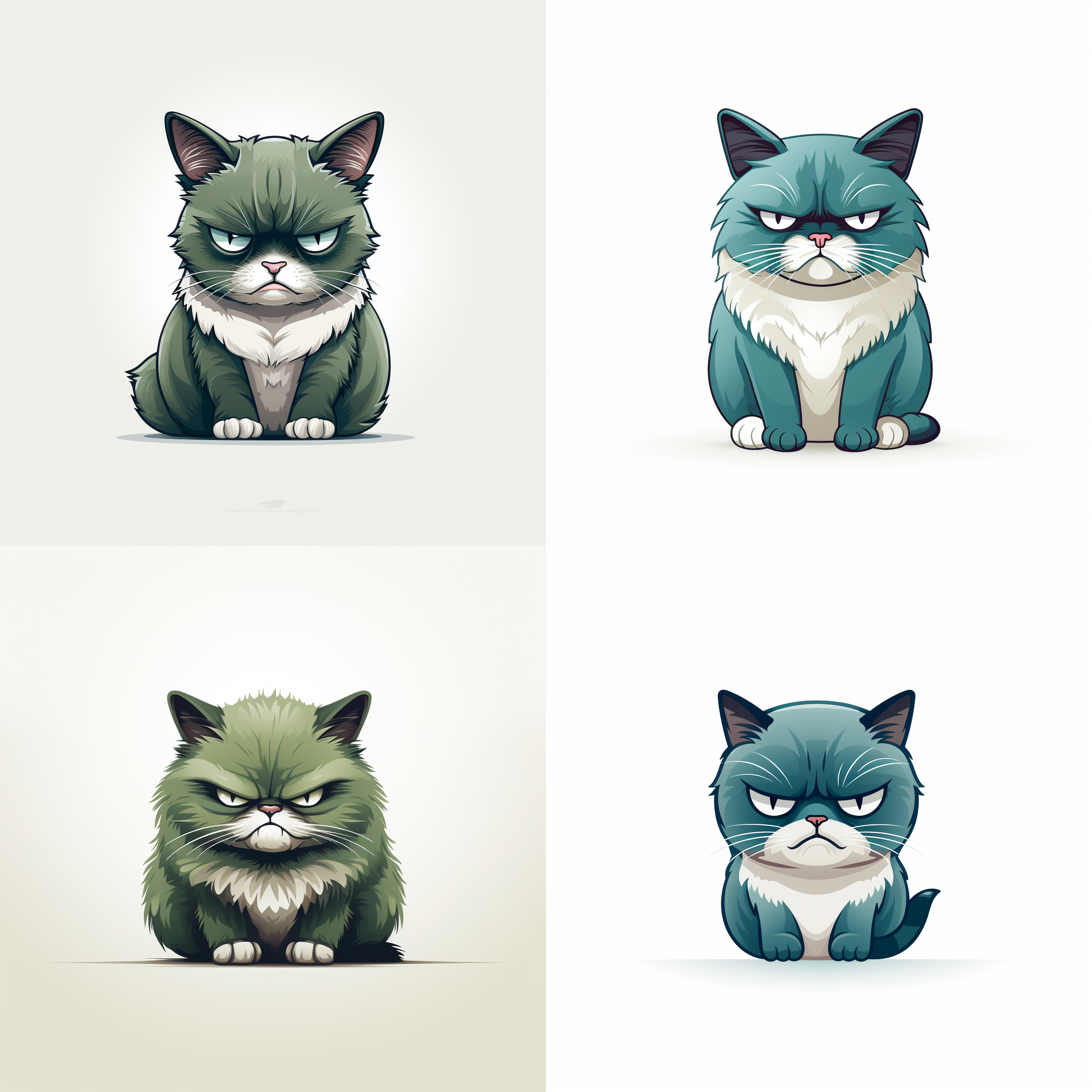
Things are starting to get interesting! The images are less detailed, which is what we are really looking for when we create a logo. We are looking for it to represent the idea with the least possible complexity. Let's continue with 250:
professional minimalistic logo | grumpy cat | flat illustration | green palette | white plain background --s 250

Wow! Now only the face appears, and this is getting closer to what we want. Shall we try with 150?
professional minimalistic logo | grumpy cat | flat illustration | green palette | white plain background --s 150
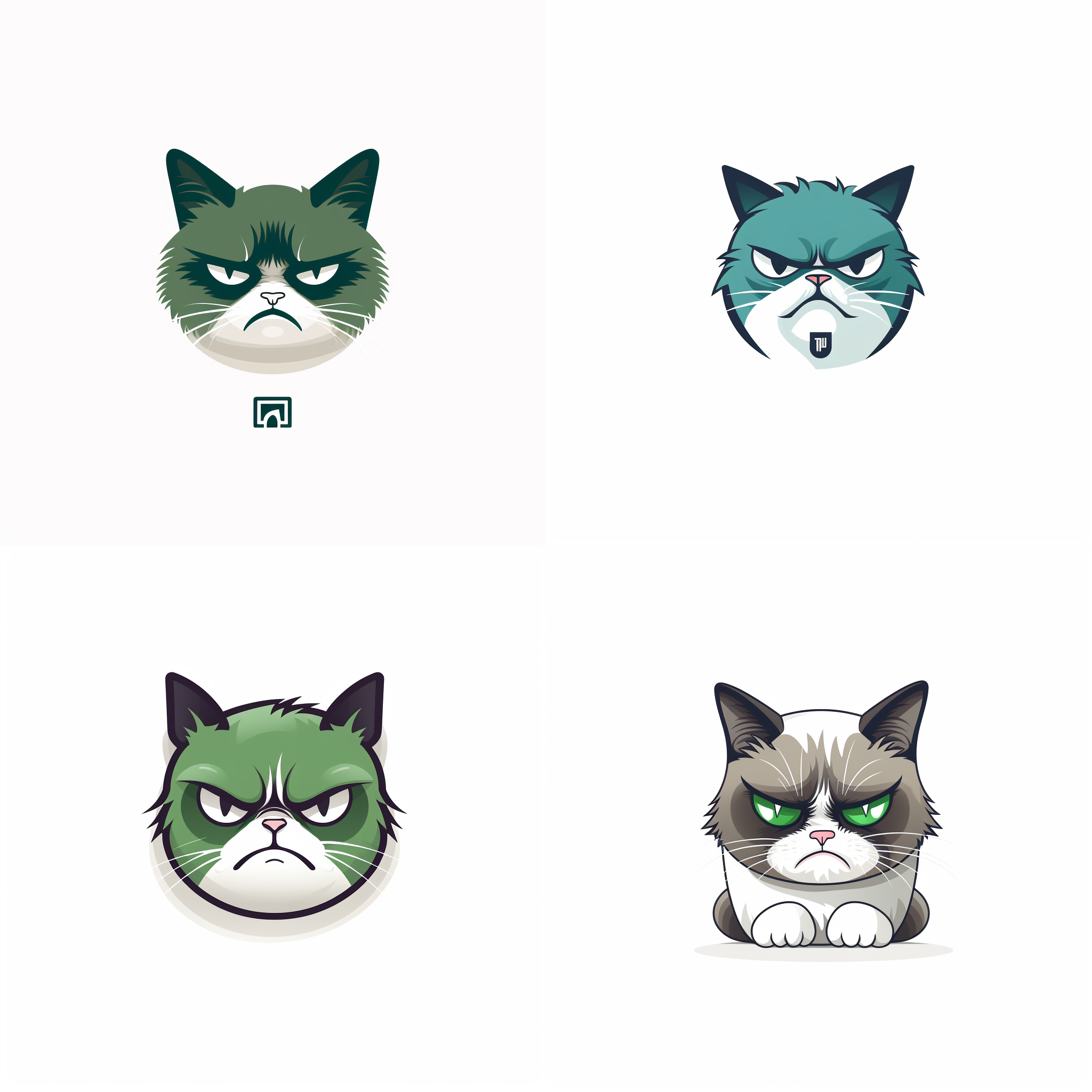
This is something else! But we can still fine-tune it a bit more. Let’s try with 50!
professional minimalistic logo | grumpy cat | flat illustration | green palette | white plain background --s 50
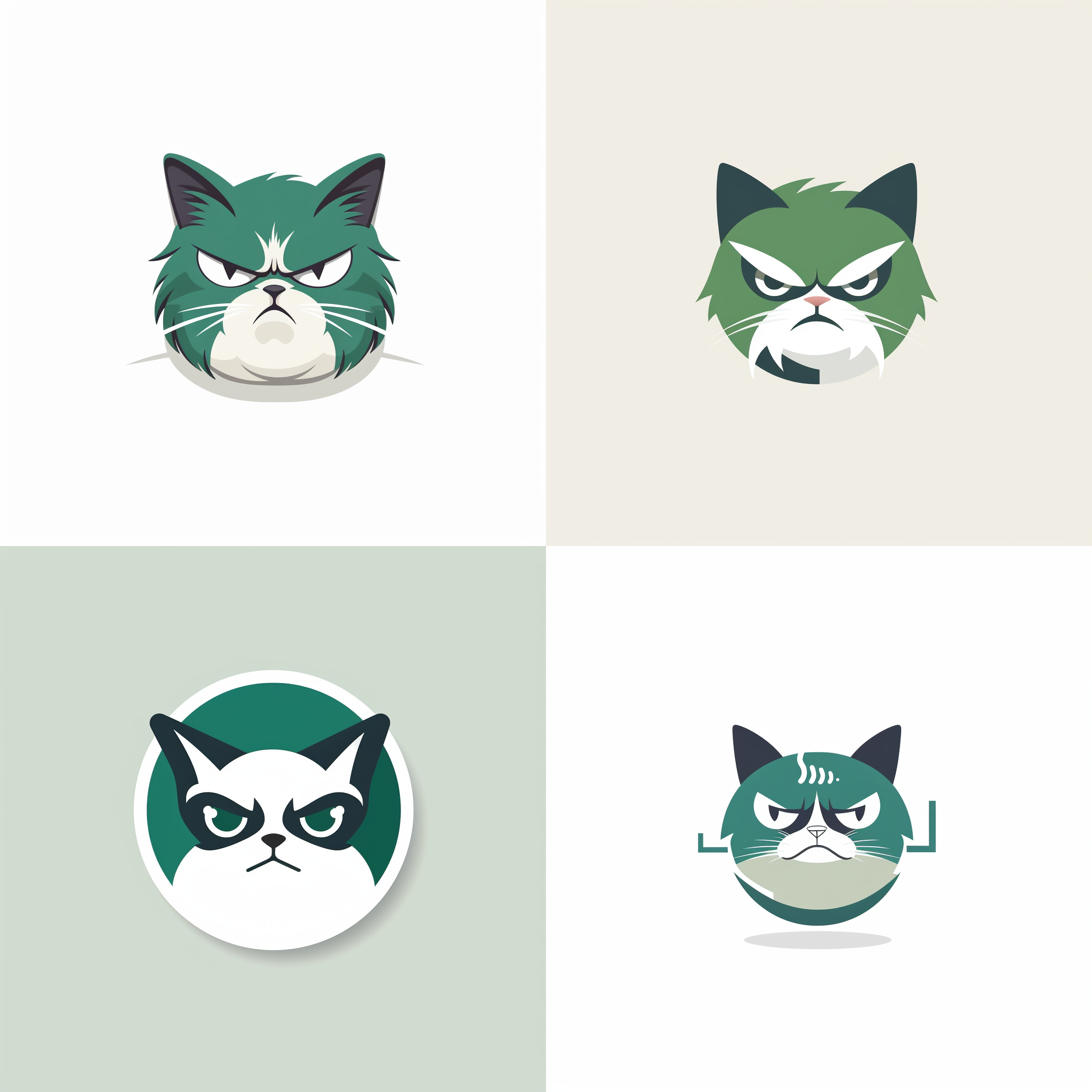
There are very interesting things here; we could even consider some of the results as good. But what if we lower it to 0?
professional minimalistic logo | grumpy cat | flat illustration | green palette | white plain background --s 0
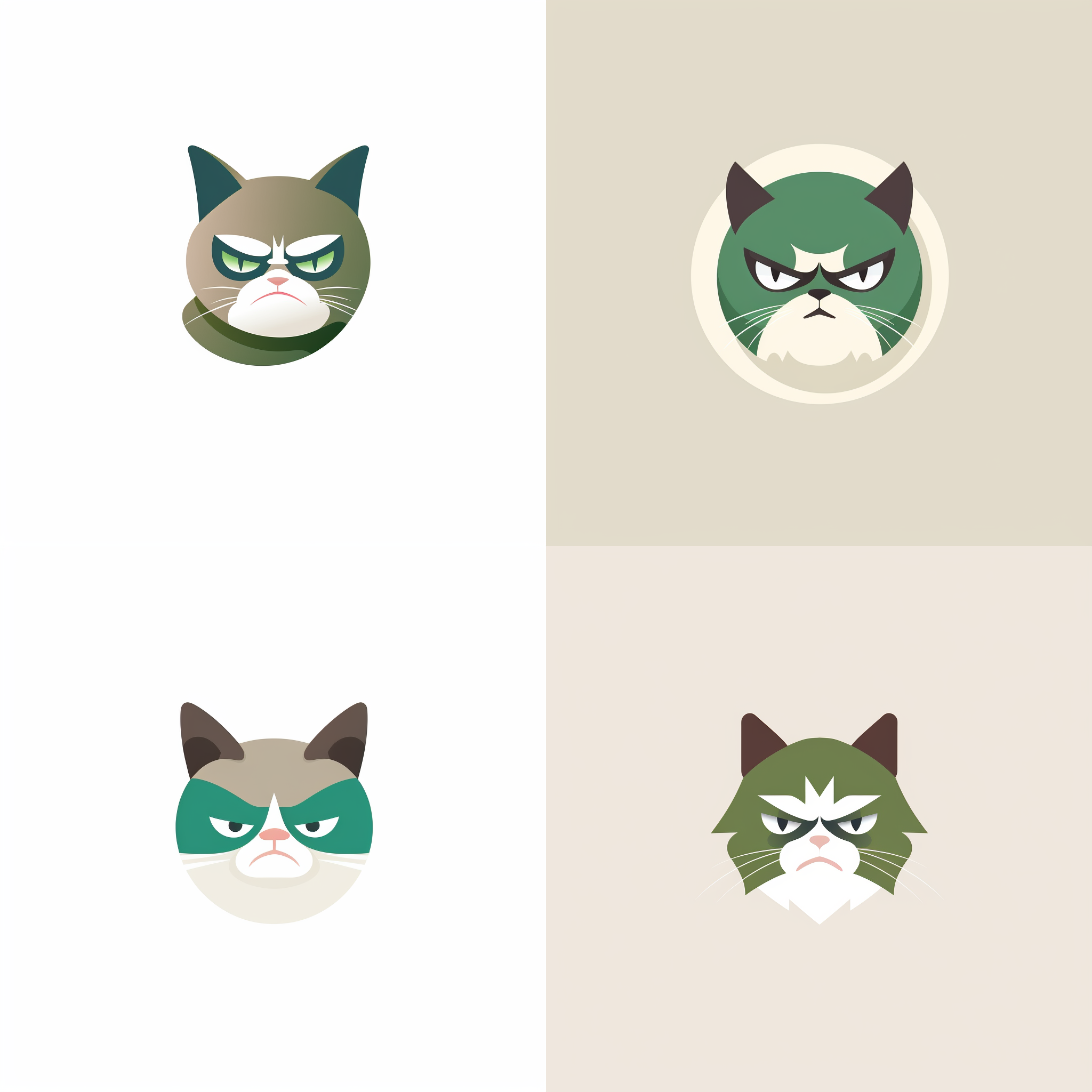
We have it!
Practice: Child's sketches
Final Objective:
Adjust the --s parameter in the proposed prompt to create illustrations designed by children.
Possible Solution:
Solution
The correct solution will depend on the tastes of the viewer. In this case, I would again opt for a value close to 0, as it would better match what a 10-year-old child would be able to draw.

Conclusions
As you have been able to verify, this parameter allows us great versatility within the same prompt. Depending on whether we want more or less artistic results, we can play with it and take our prompting to another level!
Share Your Results
Join us at X, with the hashtag #PromptingForArtists to share your results, queries, or comments.
References
To cite this content, please use:
